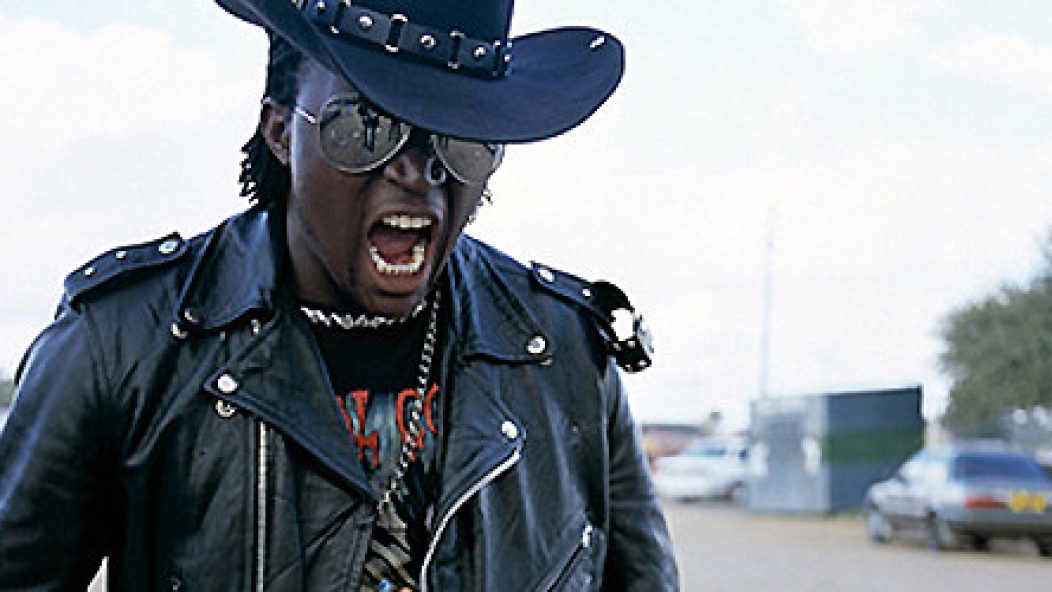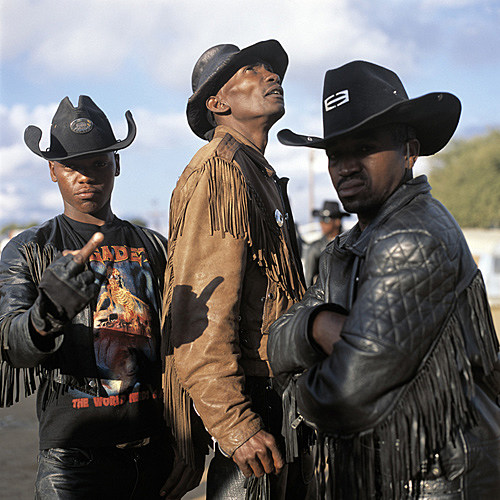
Botswana's metal cowboys

. . .
Sociologist Keith Kahn-Harris has written an article on Frank Marshall’s photography project about metalheads in Botswana. It is both a fascinating read and look. Kahn-Harris sets out the context: metalheads in Botswana dress like cowboys, drawing inspiration from Motörhead’s Ace of Spades cover (and perhaps also Mad Max), adopting “metal names” like “Dead Demon Rider” and “White Devil”. The Wikipedia-level context: as the country directly north of South Africa, Botswana is mostly desert and slightly smaller than Texas.
Potential subtexts abound:
- “Look – metal in [insert obscure country]!”
- “Look – black people liking metal!”
- “See the natives as they collide with Western culture!”
These were the first three narratives that came to my mind. As you can probably tell, they’re mostly negative. The first and third smack of exoticization, and the second is patronizing. The Internet has homogenized metal so much that I hardly think of it in regional terms now. Sure, potent bands like Impiety and Wormrot come from Singapore. but nothing in their sound indicates “Singapore”. They sound like Western bands. Usually when bands try to incorporate native, non-Western influences into metal, the results sound forced.
Ironically, metal has become a colonizing force. It has one narrative of rejecting colonizers – see Norwegian black metal vs. Christianity. But it also has disruptive potential, altering economies (shows, recordings), fashion, and perhaps even lifestyle. This Botswana example adds further complexity: black people liking and playing music dominated by white people, but which has roots in rock ‘n’ roll and the blues – music invented by black people. Perhaps reclamation (albeit unconscious) is occurring.
Context matters, too. This article appears in Vice, which has a tradition of pointing and laughing at people. I don’t think that’s the case here. But the high quality of the photography only emphasizes the distance between observer and subject. We are here, not of there, and there appears in crisp focus, staring back at us. It looks a little like us. But (for most) it also looks hardly anything like us. The notion of “us” is not as easy as “Wacken, show me your horns”.
. . .
Thanks to Carm for the tip.
. . .










